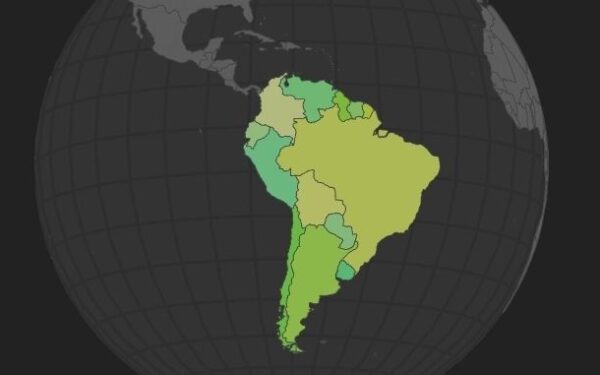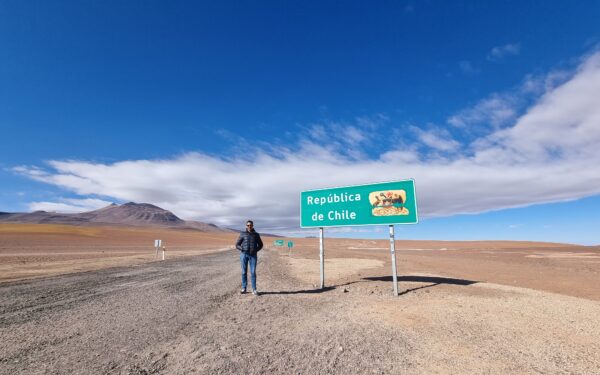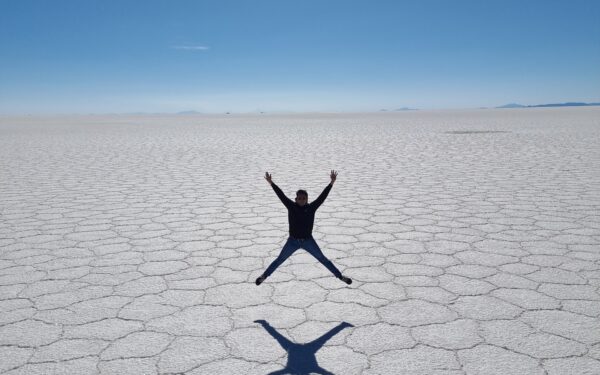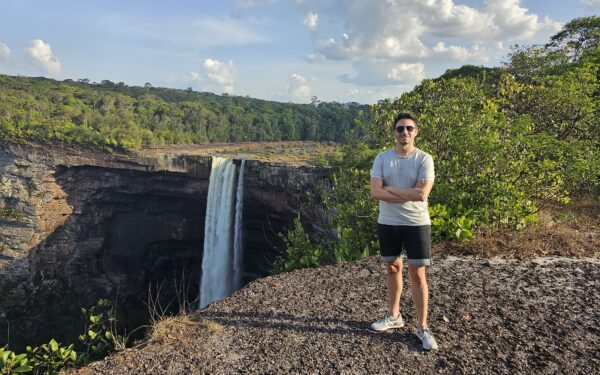Travel report: Peru
Date of visit: May 2018
Peru is THE backpacker mecca in South America. Although the whole continent is very popular among backpackers, Peru stands out especially. This certainly has to do with the fact that the country is cheap and has a good tourist infrastructure. But also because the country is relatively safe.
For me Peru was the second country in South America and the 72nd overall. Three years earlier I had experienced a trip in Brazil where a lot went wrong, so that I hesitated more than three years until I returned to the South American continent.
After I booked my flights, all I had to do was to plan the itinerary. Fortunately, Peru is a country where the route is practically fixed right from the start. The most typical route is the Gringo Trail from the capital Lima to Cusco. The end of this route is then Machu Picchu, which is located in the surroundings of Cusco.
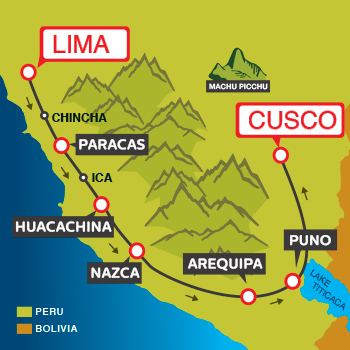
The trip to Peru was also a trip for a long time, where I booked practically nothing in advance. I booked the first night in Lima before the trip and wanted to decide from day to day whether I would stay or go on. The only things I decided against before the trip were the Nazca Lines and Lake Titicaca. Most Peru connoisseurs recommended that I skip these two places when time was short. And finally I had only 13 days…
The tops and flops of the Gringo Trail
Eventually, I spent two days in Lima, one day in Paracas, one day in Huacachina, one day in Arequipa and seven days in Cusco.
Lima is actually also a city that can be skipped. However, as most travelers arrive in Lima and depart from there, it can be inevitable to spend at least one day or one night there. Lima is not a bad place, but there are just so many better things to do in Arequipa or Cusco. Therefore, it would be a waste of time if you spend too much time in the capital. Especially when time is short.
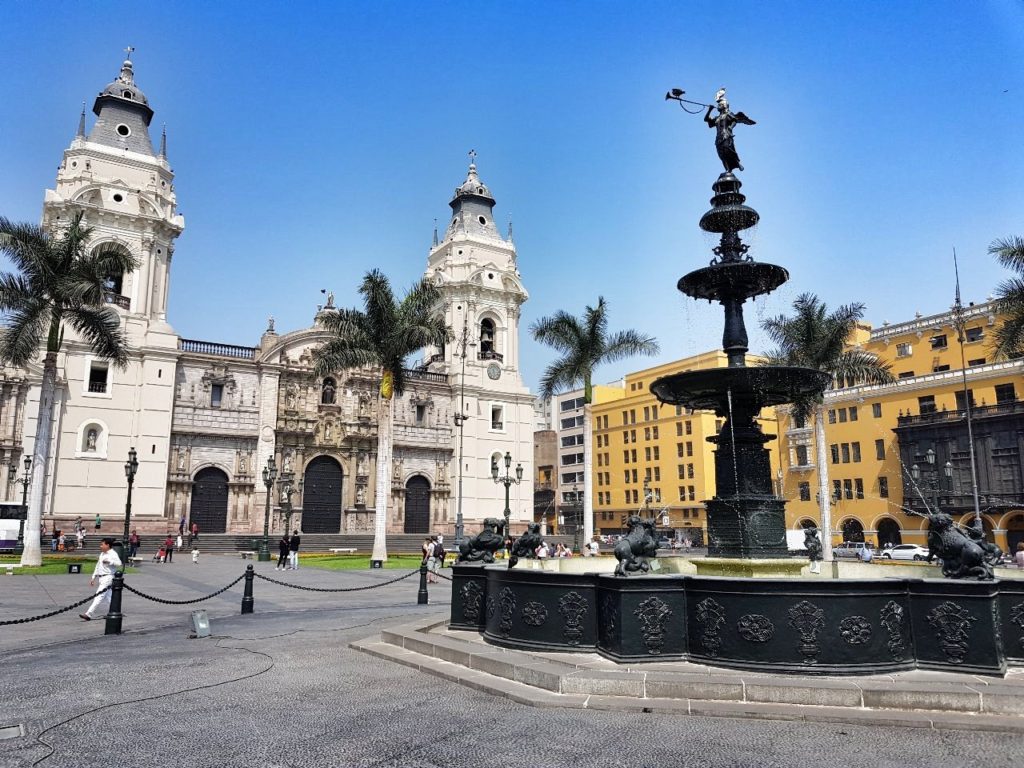
While Lima is the place that can best be left out without a bad conscience, there is one place you should definitely not miss: Cusco. To leave out Cusco would make no sense anyway, because you would miss Machu Picchu. But Cusco is still worthwhile for many other reasons. On the one hand the city is cool and on the other hand there are a lot of day trips that you can do from Cusco.
Another must see is Huacachina. This is actually one of the most beautiful and surreal places I have ever seen in my life. Huacachina is the only desert oasis in South America. The place is very small though. You can walk around the lake in 15 minutes. Many traveler arrive during the day, do the dune buggying in the afternoon and leave the next day. One day is really enough, although the place is magical.
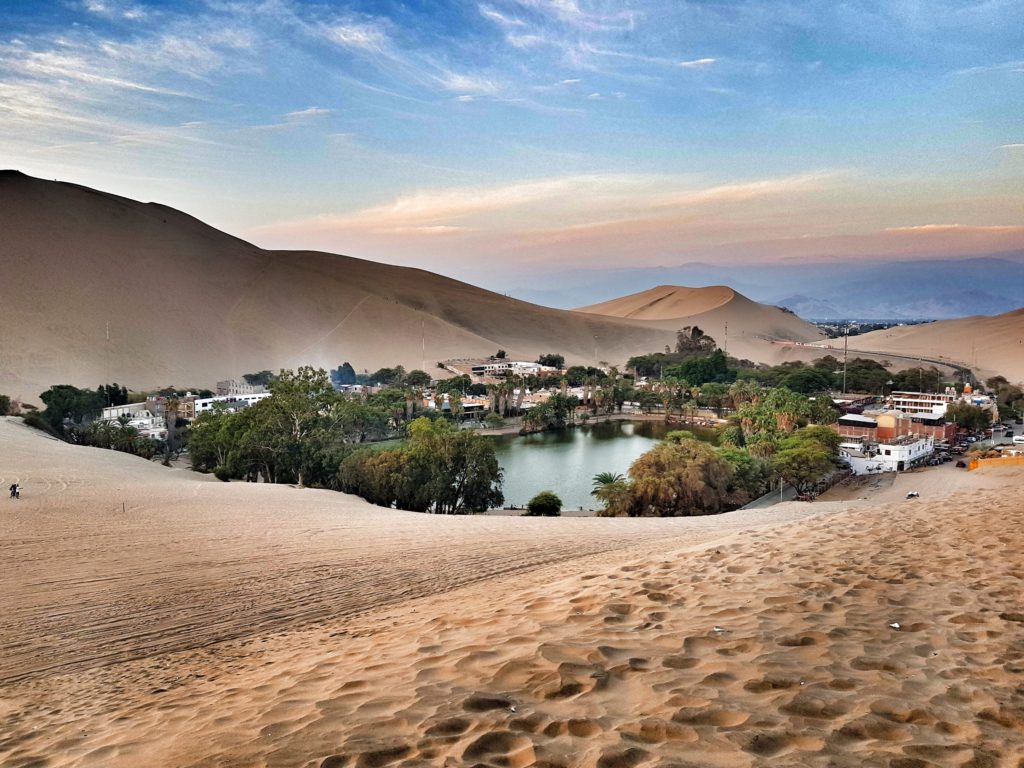
The other places I’ve visited are Paracas and Arequipa. I liked both places, but they cannot compete with Huacachina and Cusco. Therefore, I recommend keeping it short there as I did. I wouldn’t completely skip them though.
Most people visit Paracas because of the Islas Ballestas also known as the poor man’s Galapagos. The tours to the islands are in the mornings so that you can leave the place in the afternoon towards Huacachina.

Arequipa is another colonial town in Peru. It’s a city with a nice historical city center and a few good sights. I wouldn’t loose too much time there, unless you do the Colca Canyon tour.
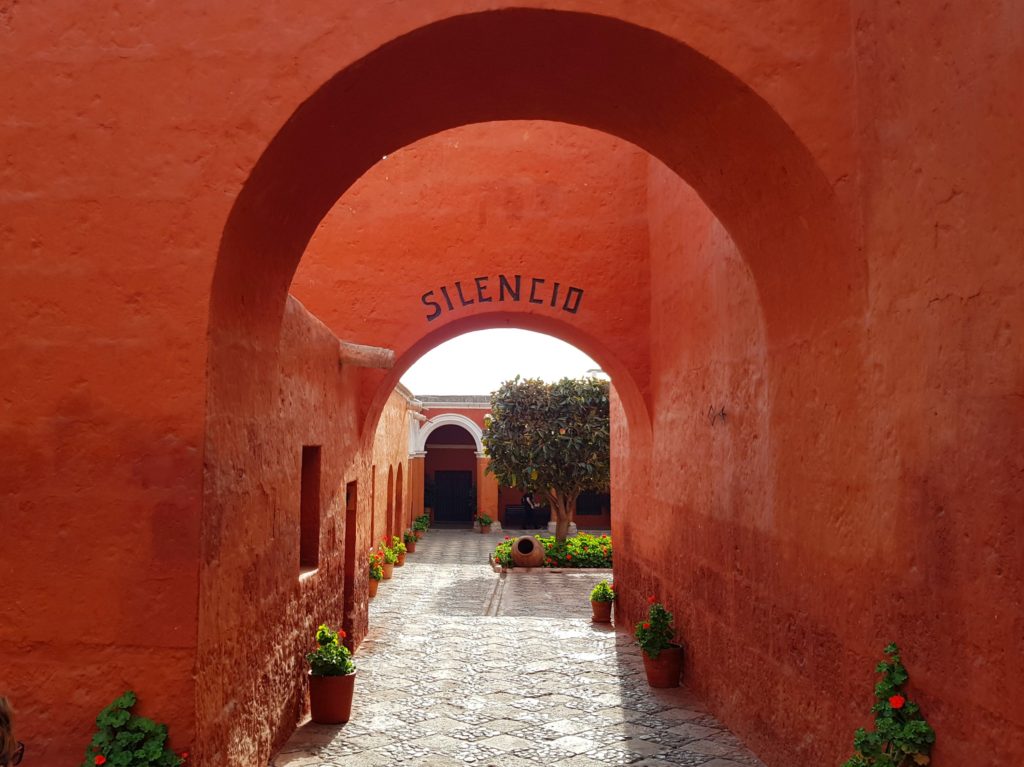
Cusco and around
Cusco was my highlight in Peru. Many use Cusco as a base for tours around the city. However, Cusco also has a lot to offer. The city has some interesting sights, a lively city center, shops, wild nightlife and a decent restaurant scene.
Cusco is also one of the most touristy cities I’ve ever been to. Beside the typical tourist shops (every few meters a tour provider, souvenirs, massages etc.) there are also lots of annoying sellers. The area around the Plaza de Armas is especially bad. If you drink a coffee there, you can assume that in one hour you will be approached 30 times (seriously, I’m not exaggerating) by dealers who want to sell paintings, selfie sticks and other things.
Another negative thing is the elevation of the city. Cusco lies at 3,400 meters and unfortunately altitude sickness is something that most people feel in different forms. The air is very thin, which you sometimes feel when you walk up ten steps.
Apart from that, Cusco is really cool. Nevertheless, the tourists don’t come because of Cusco itself but because of the sights outside the city.
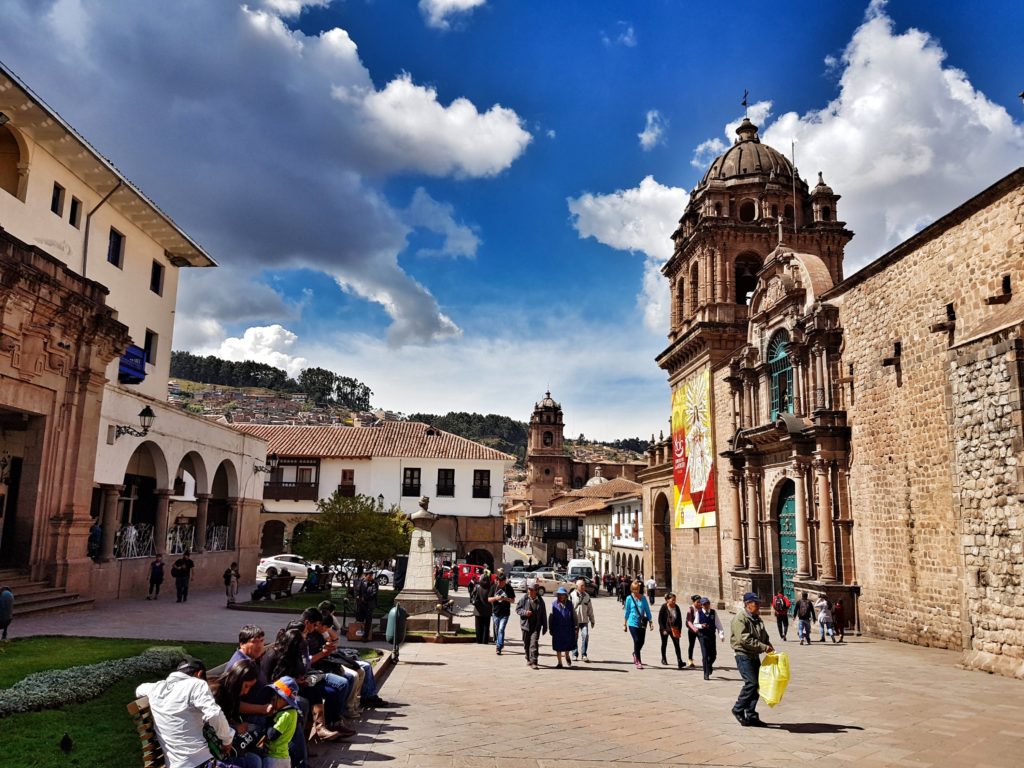
Machu Picchu is obviously the most famous sight near Cusco and there are many ways to visit the wonder of the world. There are various trekking options to the Inca site. Some of the treks are short, some take a few days (like the famous Inca trail). I didn’t have enough time for a trek, so I had to rely on shorter tours.
It is also possible to visit Machu Picchu on a day trip from Cusco, however, I would advise against it. Keep in mind that it takes four to five hours from Cusco to Machu Picchu. It would be a very long day, therefore.
A great option is to combine Machu Picchu with the Sacred Valley tour. That’s what I did. I did the Sacred Valley tour on the first day, and finish the tour in Ollantaytambo instead of returning to Cusco. From there, I went to Aguas Calientes 2 hours by train), took a hotel there and visited Machu Picchu in the next morning. This option will save you some time, as you don’t have to drive the full way back from the Sacred Valley tour.
Sacred Valley
This tour was actually one of my highlights in Peru. There are different itineraries available and I would strongly recommend to book a tour that includes the Salineras de Maras.
The tour I booked took me to Chinchero, Moray, Maras and Ollantaytambo. The tour was really packed and we spent only half an hour at each site, but the advantage was that we could see a lot of great things in one day.
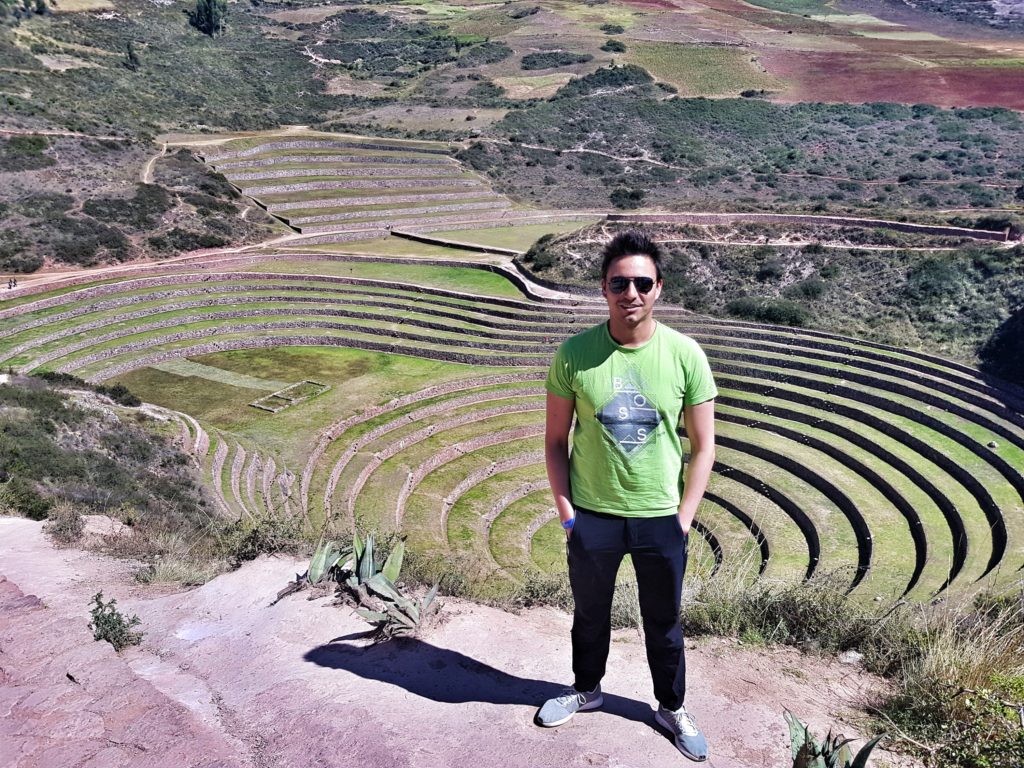
Moray was incredible, but the Salineras de Maras were at least as impressive. It was just about half an hour from Moray and you have to pay a separate entrance fee, as the salt mines belong to a private company.

Ollantaytambo is only the end of the tour if you’re next stop will be Aguas Calientes. Otherwise, the tour will end at the ruins of pisaq.
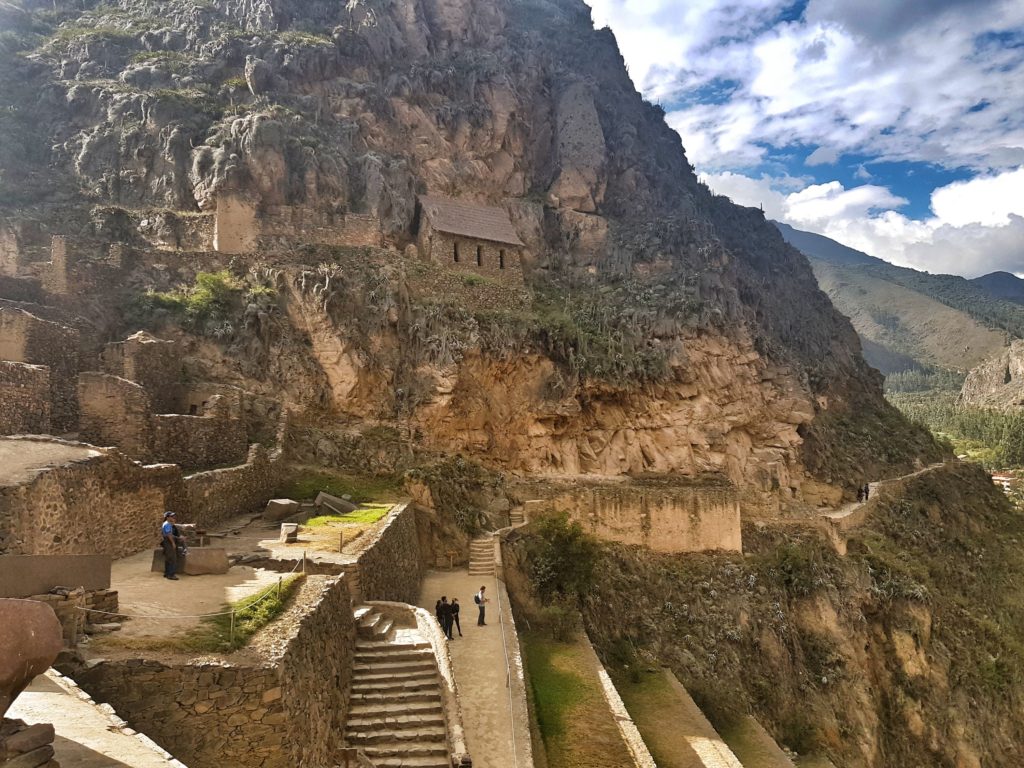
The Sacred Valley tour doesn’t only give you the opportunity to see some real cool sights but also to learn interesting things about the Inca culture. As I said, it was one of the best tours I’ve done. Not only in Peru but everywhere.
Machu Picchu
There are seven new wonders of the world (plus the Pyramids of Gizeh as the eternal wonder of the world), and Machu Picchu is the fifth I’ve visited.
Although this list is very controversial, all these wonders are special and worth a visit. Machu Picchu ranks high among the five I’ve visited. It’s just incredible if you imagine how the Incas built this city in the jungle surrounded by mountains. How did they manage to get all the rocks and stones up there?
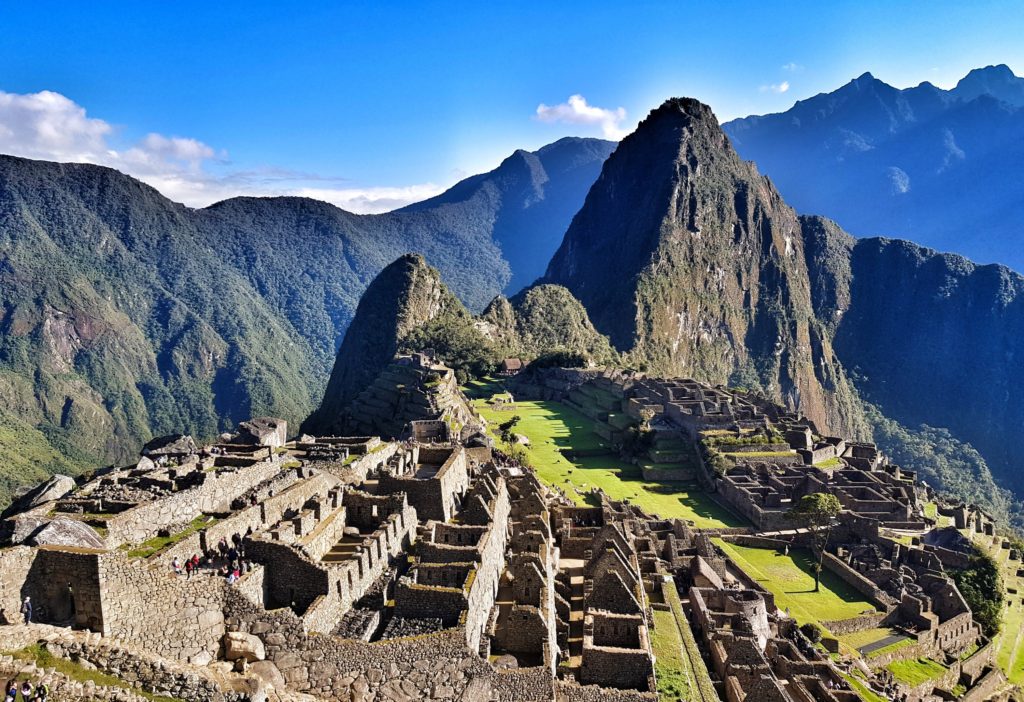
Needless to say that this Inca site is overcrowded, but all seven wonders of the world are. If you can arrange it, then go very early in the morning or in the late afternoon. And avoid Sundays!
It is also possible to hike up Huayna Picchu or Machu Picchu (the mountain next to it, not the inca city). However, tickets must be booked months in advance. I wanted to buy the ticket for Huayna Picchu about six weeks before the trip to Peru. Sold out! And it wasn’t even peak season.
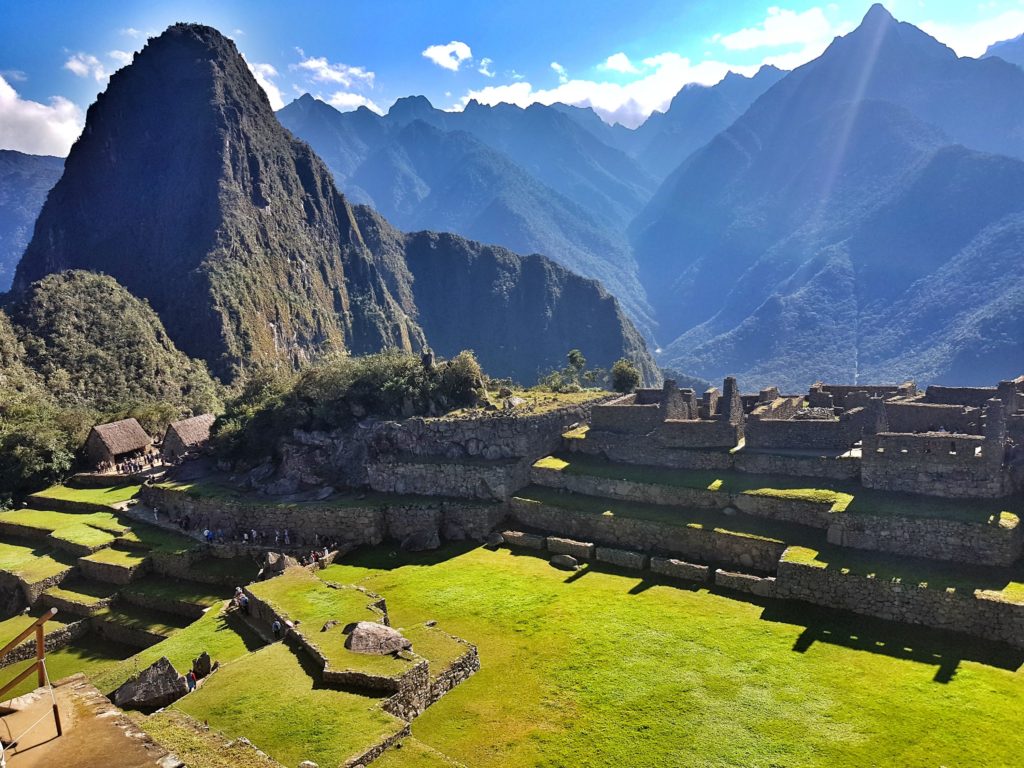
The tour I booked wasn’t as long as expected. The start was at 6 AM in Aguas Calientes and we entered Machu Picchu around 8 AM. The, however, was over after an hour, but you can stay longer and explore the Inca city by yourself if you want. Interesting fact: the Incas didn’t call this city Machu Picchu. It is unclear what the real name of it was.
By the way, Machu Picchu was by far the most expensive of the five new wonders of the world I visited. Although the entrance ticket is only 70 Soles (21 USD), the total price of the tour costs more than 200 Dollar. The reason for the high price are the expensive train tickets. Two train companies get you to Aguas Calientes. Both are owned by Europeans and although the companies create some jobs in Peru, all the earnings go to Europe, which is a shame in my opinion.
Vinicunca Mountain
Most people know this mountain as “Rainbow Mountain”, and all the travel agencies advertise it with its nickname. Vinicunca Mountain became a tourist attraction just a few years ago. Travelers who have visited Peru 10 or 15 years ago probably didn’t know about its existence back then.
The tour to the Vinicunca Mountain was by far the most challenging day in Peru. First, there are four tours each day, the first begins at 2.30 AM and the last at 4.30 AM. I opted for the last one so that I could sleep until 4.15 AM at least.
Second, it’s a 2 hour trek up to the mountain. And it’s challenging! It starts at 4’400 meters and ends at 5’200. The highest elevation I have ever been to was 3’900 in Ethiopia. During that 3 day trek in the Simien Mountains I learned how difficult it is to trek at such an altitude where the air gets thinner and thinner.
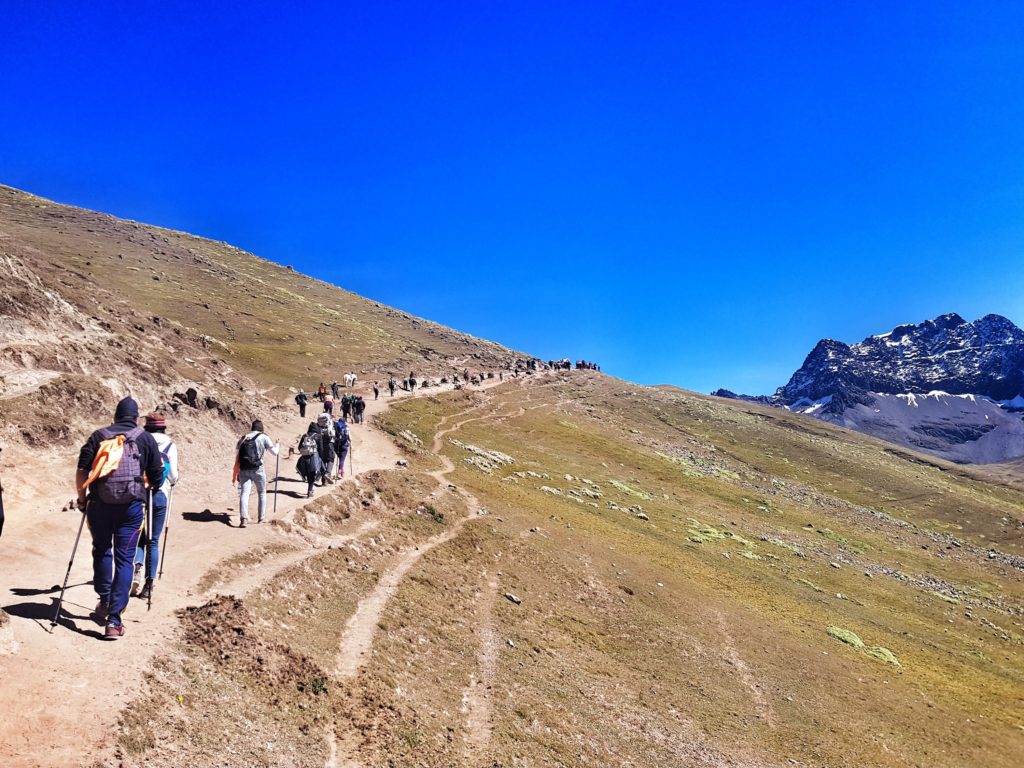
As I said, the hike was really tough. I stopped every two minutes for a 30 second break, and so did most of the other hikers. The good thing is that you can take a horse for approximately half of the distance. Locals in traditional Peruvian clothes wait every 100 meters for exhausted travelers and offer the back of their horse for a “small fee” of 50 Soles (~15 Dollars). I won’t tell if I took this shortcut or not…
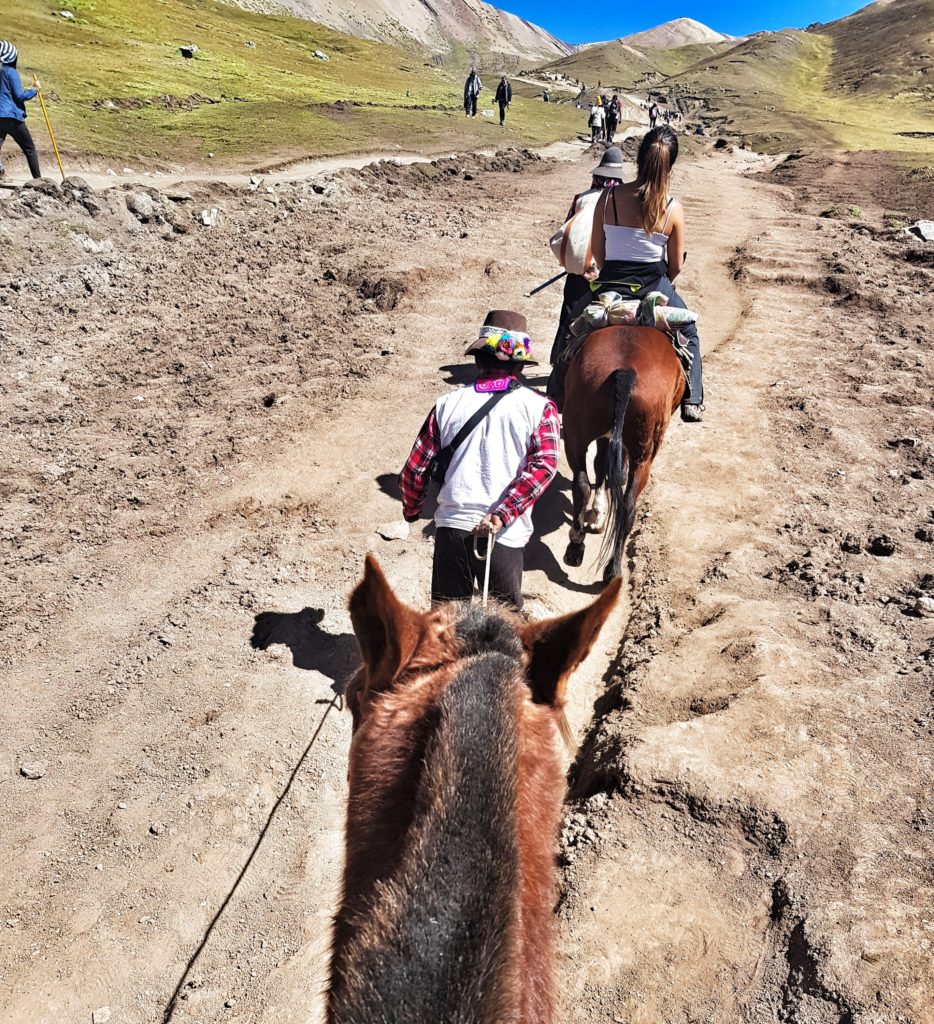
As soon as you reach the goal, you know why you had put all the efforts into this trek. Vinicunca Mountain looks stunning. I have never seen anything like this, and would call it one of the most impressive natural sights in the world.
By the way, the Peruvian know in the mean time how to benefit from this mountain. You will find many vendors who sell sodas, sweets and souvenirs up there. Of course, the goods don’t have the same price tag as in Cusco…

The trek back down was also hard. My knees hurt. All in all, the whole day was pretty challenging. Getting up in the middle of the night, four hours of trekking, eight hours in the minibus, a colorful mountain and some interesting people I met. Not the easiest but a great last day in Peru.
My travel experience in Peru
Peru is a fantastic travel destination. The country’s biggest strength is in my opinion its nature. I have seen incredible landscapes in Peru that I have never seen anywhere else before. And the good thing is that all the places worth seeing are relatively close to each other, so that you can see something new every day.
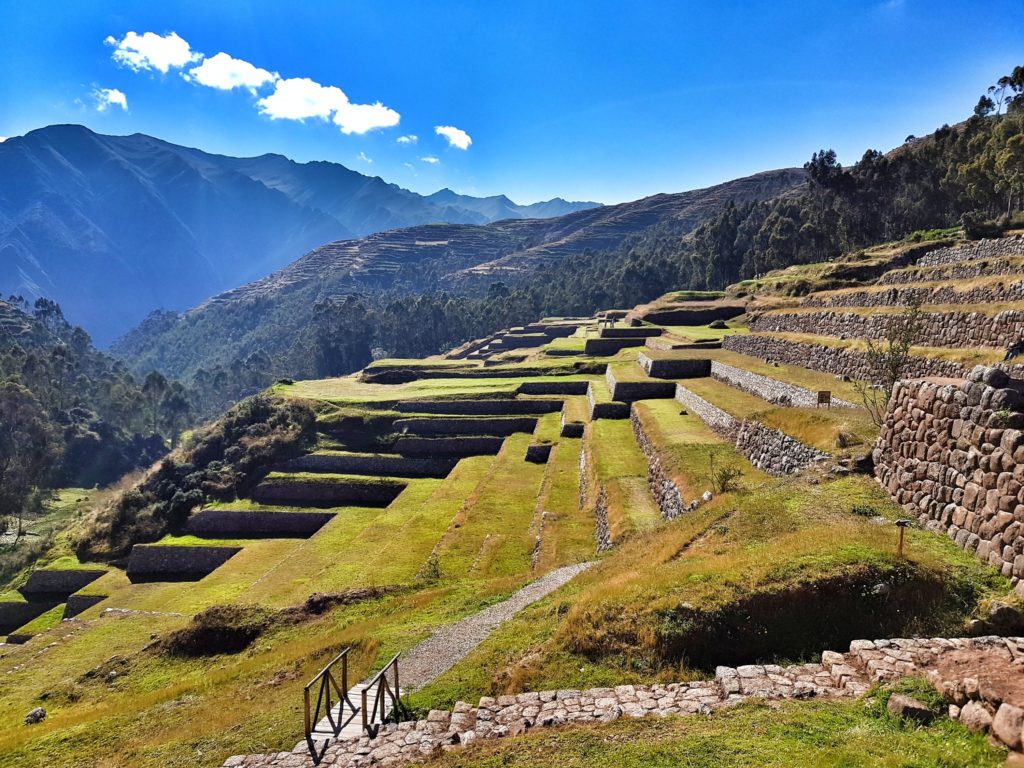
However, sightseeing and beautiful scenery is only a small part of traveling. Seeing a nice landscape for an hour doesn’t make a trip great if the rest of the day sucks.
And I have to admit that the trip to Peru started a bit boring. On the route from Lima to Arequipa (the first five days of the trip) the only fun day I had was in Huacachina. Why? Because it was difficult to get in touch with other travelers.
When I travel alone, I often get to know other travelers on tours, and they meet again later for dinner or in a bar. The problem was that I was the only non-Spanish speaking tourist on the tours in both Paracas and Huacachina.
Wikipedia says that half of the tourists in Peru are from other South American countries. And I had the luck to be in tour groups with 95% South Americans. And I had the misfortune that I always took part in tours where only South American tourists were present. It’s really not that fun when you cannot communicate with other travelers.
Therefore, I changed my travel style dramatically and started to sleep in hostels. I usually hate dorms, but as I was so frustrated with the fact that I couldn’t talk to other people, I booked a bed in a dorm in Huacachina. Fortunately, I shared my room with one guy only. He was traveling with the bus company Peru Hop and said that he would join a BBQ later and meet his travel buddies there. He invited me too, and this changed the whole situation. After that evening I had many new phone numbers and many of these people again in my remaining time in Peru.
The rest of the trip I spent exclusively in hostels. Although I didn’t sleep in dorms anymore, I lived more or less the backpacker life I always avoided on other trips. But it was fun, although I was probably ten years older than most other hostel guests. But so I met some really interesting people and also some idiots. The trip became more exciting.
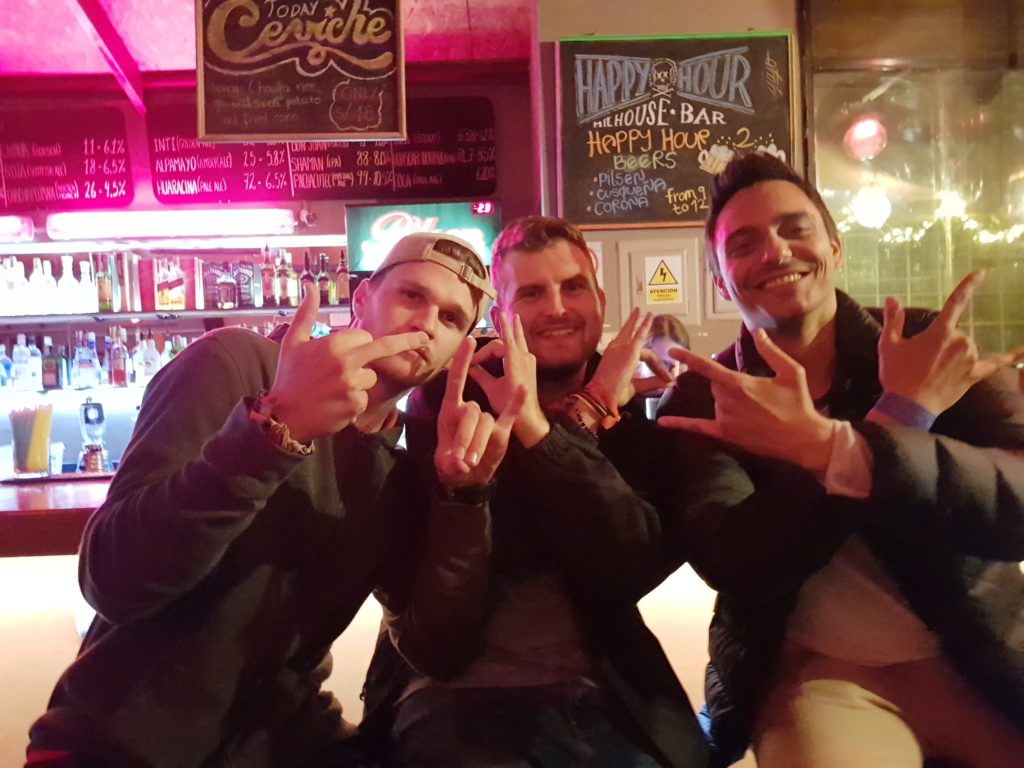
Peru is a country that is also quite suitable for party tourists, as there is something going on every evening at the places of the Gringo Trail. For me this would have been paradise a few years earlier. But you don’t even have to leave the hostels for that, as most of them have their own bar where there are Beer Pong and similar games every evening.
Although the hostel life is fun, it also has a downside: you live more or less in a bubble. You only hang out with other travelers and learn more about the school system in France or the nightlife in Scotland than about Peruvian culture. That’s why I find it ironic how arrogant backpackers sometimes are towards other people, e.g. group travelers. At least, these people get to know something about the country they are in.
There are many (and better) reasons to travel to Peru than the excesses in the hostel bars. I already mentioned the beautiful nature, but people interested in wildlife will like the country too. In Peru, you have plenty of options to see animals. One of the best options are the Islas Ballestas, where you can see see lions, birds or penguins. Other animals such as lamas or alpacas can be found in and around Cusco.
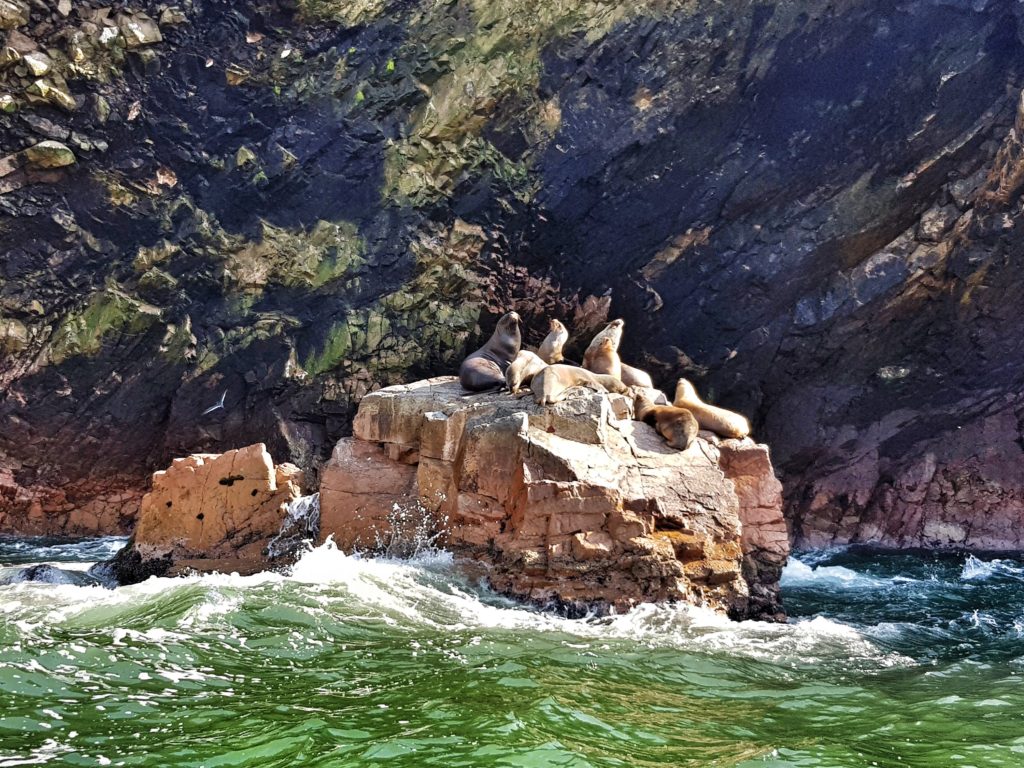
Peru is one of the most touristy country I’ve ever been to. Getting around is quite easy and cheap therefore. Numerous bus companies drive between Lima and Cusco, and I booked my rides with Cruz del Sur. There are some pretty adventurous stories about bus rides in Peru, but you won’t experience something uncomfortable when you book with one of the known companies. You have semi-beds in Cruz del Sur buses and also an entertainment system. It wasn’t bad at all.
The food is also a good reason for a trip to Peru. I didn’t expect a lot to be honest, as many Latin American countries don’t have the reputation of having a great cuisine. But I was actually quite surprised in Peru. The cuisine heavily relies on meat, rice and potatoes, but offers more variety than I have experienced in other Latin American countries.
At some point, I had to try the most infamous Peruvian dish: fried guinea pig! I am not the most adventurous person when it comes to food, but many people confirmed that guinea pig is actually pretty tasty. So I gave it a try. It tasted a bit like chicken and wasn’t bad at all. However, it was a bit difficult to eat and I had enough after eating a quarter of it.
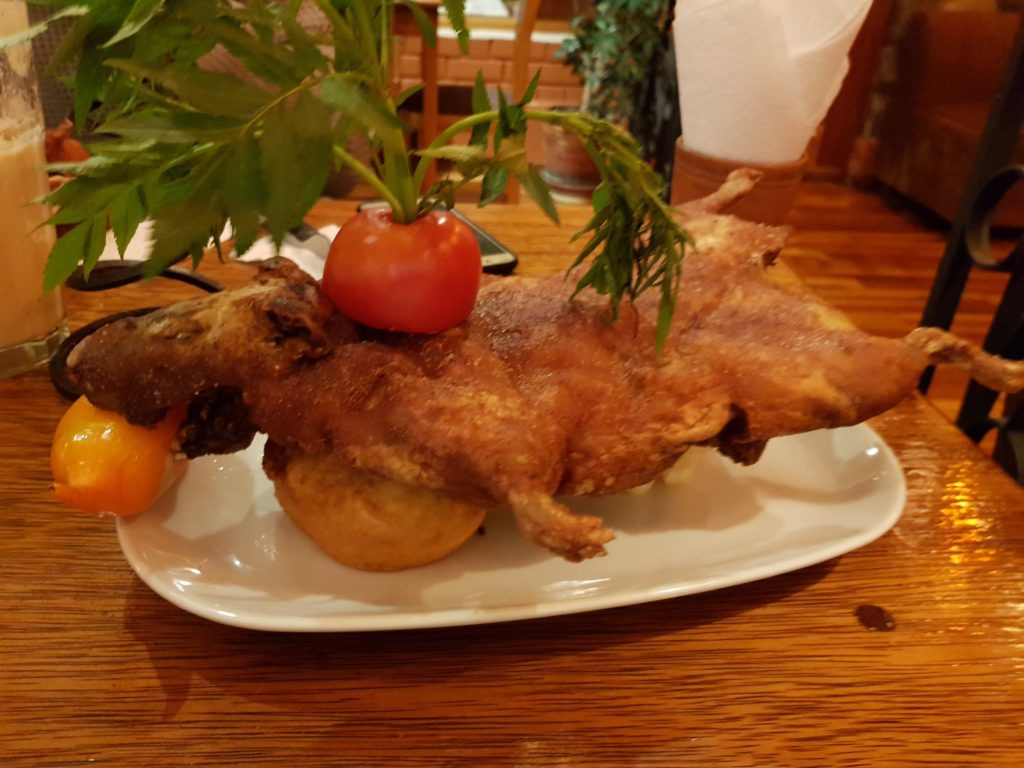
Not everyone liked the fact that I posted an instagram story (#foodporn) with my dinner. A Spanish-speaking person called me a beast for eating such a cute animal. As if a calf wasn’t a cute animal…
Is Peru a worthy travel destination?
Peru is one of the best countries I have been so far. The country offers interesting sites and unique landscapes like the desert oasis of Huacachina or the Vinicunca Mountain near Cusco. Moreover, traveling in Peru is budget-friendly and affordable. It’s also a pretty safe country if you don’t leave the tourist trails.
A few Spanish skills will certainly make a trip to Peru easier. But even if you don’t speak Spanish like me, Peru is a pretty easy country to travel to. Although English is not widely spoken, people in restaurants, hotels, shops, etc. usually understand what you want to say.
All these points make Peru a perfect beginner’s country for travelers, whether in South America or around the world. Although South America can’t quite keep up with Southeast Asia in terms of easiness, Peru doesn’t present much of a challenge for newbies.
Will I ever revisit Peru? It’s hard to say. At the moment I have other priorities and I think the trip along the Gringo Trail was a once in a lifetime experience. Nevertheless I don’t want to rule out a return, because Peru offers some other beautiful places. But for all the others who haven’t been there yet, I can highly recommend the country.
Find the travel reports of the other countries I’ve visited here!
